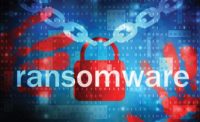In today’s business marketplace, with the need for virtual “anywhere, anytime” access to information, most companies are mindful of the inherent security issues – threats of attacks, individual devices connecting to the corporate network, data leakage and other forms of malicious mal-intent. With the “de-perimeterizing” of the corporate network, more end-user devices in the workplace and the proliferation of physical and virtual storage (Google, Dropbox. iDisk, etc.) – how do you keep your business “secrets” and proprietary data contained and secure within the corporate “vault”?
If you add into the mix the physical span and reach of the corporate entity from local to regional and global geographies – security challenges become even more significant – and complex. So where do you begin to ensure your corporate information is secure?
The key is to start with a few simple concepts. Implementing successful strategies to secure intellectual property isn’t about swallowing the elephant, but rather taking bites out of it, one step at a time.
First, do you understand your risk appetite and how that applies to the crown jewels of your business? More importantly, are you aligned from an executive position within the company? If you are, then the starting point is to define the most critical information to protect – and what is non-critical data. For example, are there certain areas of your business that require more security and confidentiality than others?
Start by defining the right structure, policy and processes – and then apply that information to the use case scenarios within your organization.
Apply best practices in how data is treated across the business, including external entities that you may use to support your business. In simple terms, having good IT practice in how you communicate, store and move data is essential – not only within the enterprise, but as it extends to those you do business with as well.
Next, address the security issues relating to access by end-user devices, a concept that’s expected to continue to mature. As we see the proliferation of end-user devices, both personal and professional devices, we must be able to apply to their use the right security framework while creating translucent processes that are user aware but don’t necessarily require user intervention. It is somewhat hubris in our intent to believe we can prevent end users (permitted users) from finding ways to gain access to corporate data from their own devices. In part, this can be attributed to the demise of the eight-hour work day. We recognize that business requirements can surface anytime of the day, any day of the week. More and more frequently, companies expect their employees to be available “anytime, anywhere” to handle business needs; and those employees aren’t always in a position to grab their corporate computer and review a critical email or document. We need to be mindful that the enthusiasm with today’s end-user devices requires the ease of accessing corporate data – and the simplicity of carrying less technology resources with more power.
Hence, the education of end users regarding security issues is essential. No matter how good your policies are, the weakest link is not always a malicious user but often a well-intended user who takes the wrong route.
Build the right security policies, be flexible and work to provide the right blend of enablement so you have control over the critical assets of the business without stifling productivity. In many cases, a user who is not educated on process and policy, who in the spirit of trying to do the right thing, ends up exposing the company.
It doesn’t take a lot to explain why policies are in place and why they are important. Go beyond just stating, “this is our policy.” Instead, explain to employees why the policies are in place to ensure corporate data is protected. You can’t please everyone all the time, but when someone understands the rationale behind the policies, they’ll more likely stay clear of actions that could potentially harm the company and its assets.
As you develop and implement best practices to security network access, don’t forget the telecom side and the old “bricks and mortar” components of the business. Many companies are so focused on protecting their networks, they forget that the more traditional, “telephony” side of the business (phones, faxes and modems) present as much risk. And with the proliferation today of electronic gadgets, be mindful of refreshing (and reminding employees about) policies governing the protection of hard copies of documents and information, including hard copy plans, budgets and paper notes taken during meetings. All too often, it’s these hard copy items that are mistakenly left behind in the seat pocket on an airplane or in a taxi or bus or hotel room.
And finally, it’s critical that you test your security processes on a regular, on-going basis. Find ways to monitor the environment to ensure that the right behaviours are taking place – and re-educate your employees continuously. Apply the right metrics to the businesses risk appetite and match that against the governance, risk and compliance aspects. Use that data in your board level discussions to effectively raise hot spots and where focus needs to be placed. Such facts are the most valuable resource to ensuring security policies are continuously kept current within today’s business environment.
|
6 Steps to Protect Intellectual Property |
|




